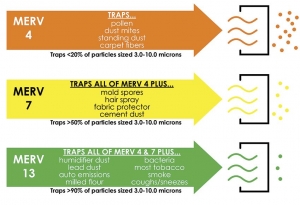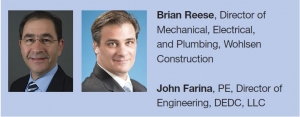 As more employees return to the workplace during the COVID-19 pandemic, understanding the role office environments play is extremely important. A critical element to any office/workspace is air circulation within the space, and how it can be designed, constructed, and controlled to reduce the risk of spreading contaminated aerosols.
As more employees return to the workplace during the COVID-19 pandemic, understanding the role office environments play is extremely important. A critical element to any office/workspace is air circulation within the space, and how it can be designed, constructed, and controlled to reduce the risk of spreading contaminated aerosols.
DEDC, LLC, a leading consulting engineering firm with offices in Delaware and Philadelphia, and Wohlsen Construction, a leading construction services firm in Delaware and the Mid-Atlantic region, have collaborated on projects that involve sophisticated solutions to the distribution of air and the control of infectious airborne pathogens within an office building that meaningfully contribute to worker safety during this challenging time.
One of the most important tools to help control the spread of pathogens is by disrupting the transmission pathways of infectious aerosols through a building’s heating, ventilating, and air conditioning (HVAC) systems. Ventilation, filtration, and air distribution technologies have the potential to limit airborne pathogen transmission. Limiting airborne pathogen transmission can help break the chain of transmission. Methods and procedures to address airborne transmission include 1) source control, 2) source removal, and 3) dilution ventilation. Source control includes the tools we are all aware of, such as wearing face coverings and social distancing. Source removal includes using tools such as local exhaust, increased filtering of room air, or utilizing air purification technology. Dilution ventilation involves increasing the outdoor airflow to the HVAC system and increasing the air change rate within a space.
The American Society of Heating, Refrigerating and Air-conditioning Engineers (ASHRAE) developed a measurement scale to report the effectiveness of air filters. Minimum Efficiency Reporting Value (commonly known as MERV) ratings are on a scale of 1 to 20 depending on the minimum size of the particles a filter can capture. For example, a filter with a MERV rating of one to four captures particles greater than 10 microns. Typical code-compliant commercial buildings utilize MERV 4 or MERV 7 filtration and are designed with four to eight air changes an hour. ASHRAE has indicated that a minimum filtration level of MERV 13 and an air change rate of six air changes per hour are required to help reduce the spread of airborne pathogens. These criteria have been utilized in the medical field for many years. Additionally, the use of Ultraviolet Germicidal Irradiation (UVGI) has been found to inactivate microorganisms by damaging the structure of nucleic acids and proteins. DEDC is active in helping local commercial properties evaluate their existing systems and upgrade these systems to achieve the ASHRAE recommend criteria.
Wohlsen Construction is actively working with organizations to construct office environments that limit the transmission of infectious pathogens and meet heightened filtration. Before construction even starts, Wohlsen’s Preconstruction Services Team works with the Design Team to discuss strategies to provide for space planning and systems that address source control, source removal, and dilution ventilation. Wohlsen’s construction professionals are very effective in helping clients achieve optimal people density in their spaces by working closely with the Design Team to provide careful consideration for workstation configuration and placement. During this time, Wohlsen’s in-house mechanical, electrical, and plumbing teams work closely with design engineers to address strategies for source removal and dilution as well as study airflow patterns and air distribution techniques to  reduce the potential for cross-contamination. This effort in preconstruction helps establish realistic budgets before construction starts.
reduce the potential for cross-contamination. This effort in preconstruction helps establish realistic budgets before construction starts.
Together, DEDC and Wohlsen Construction Company are leading the way in designing and constructing state-of-the-art office environments that help to address the increased scrutiny being placed on the workplace during the COVID-19 pandemic.
As seen published in Delaware Magazine

